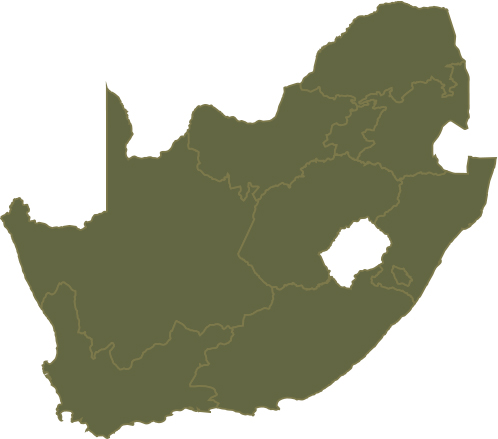South African wine has a history dating back to 1659, with the first bottle produced in Cape Town by its founder Jan van Riebeeck. Access to international markets led to new investment in the South African wine market. Production is concentrated around Cape Town, with major vineyard and production centres at Constantia, Paarl, Stellenbosch and Worcester. There are about 60 appellations within the Wine of Origin (WO) system, which was implemented in 1973 with a hierarchy of designated production regions, districts and wards. WO wines must only contain grapes from the specific area of origin. “Single vineyard” wines must come from a defined area of less than 5 hectares. An “Estate Wine” can come from adjacent farms if they are farmed together and wine is produced on site. A ward is an area with a distinctive soil type or climate and is roughly equivalent to a European appellation.
From the 1990s, plantings of red grape varieties rose steadily. In the late 1990s, less than 18% of all the grapes grown in South Africa were red. By 2009 that number had risen to 44%. For most of the 20th century, the high yielding Cinsaut was the most widely planted red grape variety, but the shift in focus to quality wine production has seen plantings of the grape steadily decline to where it represented just 2% of all South Africa vineyards in 2009. In its place, Cabernet Sauvignon, Shiraz and Pinotage have risen to prominence with Cabernet Sauvignon being the most widely grown red grape variety covering 12% of all plantings in 2009. Other red grape varieties found in South Africa include: Carignan, Gamay (often made in the style of Beaujolais wine with carbonic maceration), Grenache, Petit Verdot, Cabernet Franc, Pontac, Ruby Cabernet, Tinta Barroca and Zinfandel.

South African wine has a history dating back to 1659, with the first bottle produced in Cape Town by its founder Jan van Riebeeck. Access to international markets led to new investment in the South African wine market. Production is concentrated around Cape Town, with major vineyard and production centres at Constantia, Paarl, Stellenbosch and Worcester. There are about 60 appellations within the Wine of Origin (WO) system, which was implemented in 1973 with a hierarchy of designated production regions, districts and wards. WO wines must only contain grapes from the specific area of origin. “Single vineyard” wines must come from a defined area of less than 5 hectares. An “Estate Wine” can come from adjacent farms if they are farmed together and wine is produced on site. A ward is an area with a distinctive soil type or climate and is roughly equivalent to a European appellation.
From the 1990s, plantings of red grape varieties rose steadily. In the late 1990s, less than 18% of all the grapes grown in South Africa were red. By 2009 that number had risen to 44%. For most of the 20th century, the high yielding Cinsaut was the most widely planted red grape variety, but the shift in focus to quality wine production has seen plantings of the grape steadily decline to where it represented just 2% of all South Africa vineyards in 2009. In its place, Cabernet Sauvignon, Shiraz and Pinotage have risen to prominence with Cabernet Sauvignon being the most widely grown red grape variety covering 12% of all plantings in 2009. Other red grape varieties found in South Africa include: Carignan, Gamay (often made in the style of Beaujolais wine with carbonic maceration), Grenache, Petit Verdot, Cabernet Franc, Pontac, Ruby Cabernet, Tinta Barroca and Zinfandel.
Tradesa Corp.
618A Fleet St., Toronto, Ontario, Canada
M5V 1B9
Phone
416.944.WINE (9463) / 416.924.VINO (8466)
Fax: 416 928 0908
